Best Muscle Cars
1970s Muscle Cars that Bombed
During the late 1960s, there was fierce competition among American car makers to produce the coolest and fastest muscle cars. Many of the finest muscle cars ever made were built between 1965 and 1969 when the engines were big and gas was cheap.
However, 1970 marked the beginning of the end for the muscle cars. New emissions standards implemented by the EPA and oil embargos forced American car makers to reduce performance in muscle cars and simply make them a cool looking but basic means of transportation.
Most muscle cars produced in the ’70s have been criticized as docile imitations of their ’60s predecessors, but a few models warrant particularly harsh condemnation.
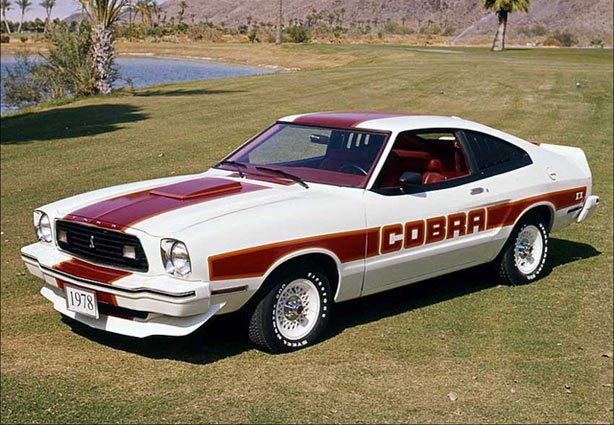
1978 Ford Mustang Cobra II
The legendary Ford Mustang performance car hit an all-time low with the downsized Pinto-based Mustang II of 1974–1978. Perhaps best known as the car of choice in the TV show “Charlie’s Angels,” it was available with an optional 302 V-8—but one that produced a mere 139 hp.
In 1978, Ford released the Cobra performance version, but the enhancements were superficial: a hood snake decal, more stripes, 13-inch “Lacy” aluminum wheels, a forward-facing hood scoop, spoilers, optional T-top roof, and black and gold trim. It was a pseudo muscle car that even the most die-hard Mustang fanatics had difficulty praising.
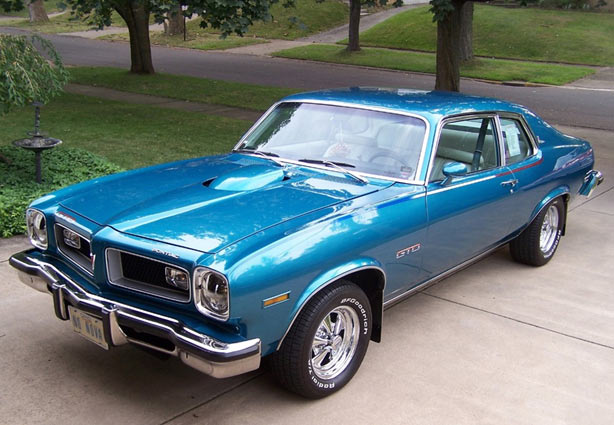
1974 Pontiac GTO
The Pontiac GTO introduced in 1964 is widely regarded as the first muscle car. It began when GM’s design team, headed up by John DeLorean, dropped a 348 hp. V-8 into the midsized Tempest chassis. The GTO option package was so successful, it evolved into its own model. At its peak, the GTO offered a powerful 370-hp Ram Air IV V-8, although the last of the pre-emissions 455s probably produced more power.
By 1973, the GTO name had been reduced to a mere option package for the Le Mans, with a detuned 455 V-8, making a mere 250 hp. In 1974 Pontiac offered a GTO option on the Ventura, which shared its infrastructure with the Chevy Nova. The motor was the Chevy 350 V-8, rated at just 200 hp. Aside from the shaker hood scoop and GTO lettering, there wasn’t much left of the spirit of the original GTO and what it represented.
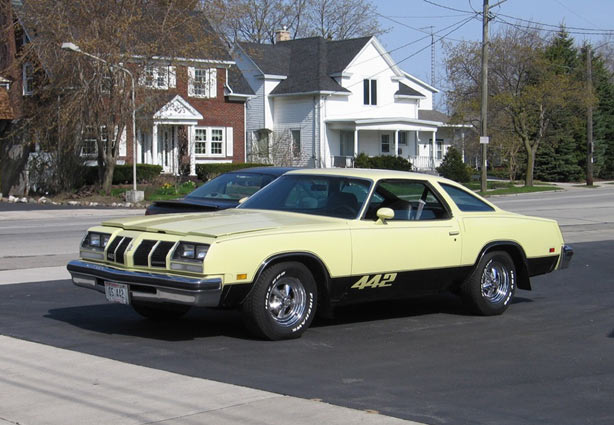
1978 – 1979 Oldsmobile 4-4-2
In the 1960s, Oldsmobile named its performance model the 4-4-2 (four-barrel carburetor, four-speed manual transmission, and dual exhausts). The 1970 Cutlass 4-4-2 set the standard with a 455-cu.in V8 that produced 370hp. Special packages included a fiberglass hood, special camshafts, and functional, low-restriction air scoops.
It is difficult to imagine how Oldsmobile marketing could have retained the famous name for 1978 model, which came standard with an anemic 3.8 L V6 or an optional 160 hp 5.0 L V8. In 1979, Hurst built a special edition 4-4-2 powered by a 5.7 L V-8. However, the larger engine produced only 10 hp more than the previous year’s model.
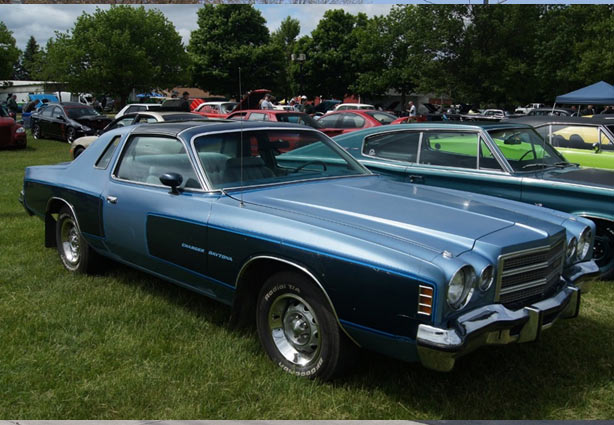
1976 – 1977 Dodge Charger Daytona
Dodge took the name of the legendary Charger Daytona built to dominate NASCAR and assigned it to its underperforming, two-door personal luxury car in hopes of selling a few cars.
In fact, the “Malaise Era” Charger Daytona was really nothing more than a gaudy two-tone vinyl stripe-and-decal package placed on a Dodge Chrysler Cordoba. There were no mechanical differences between the Charger Daytona and the Cordoba. Instead of the original Daytona’s 375 to 425 hp engines, the ’76-’77 versions limped along with only 145 hp.
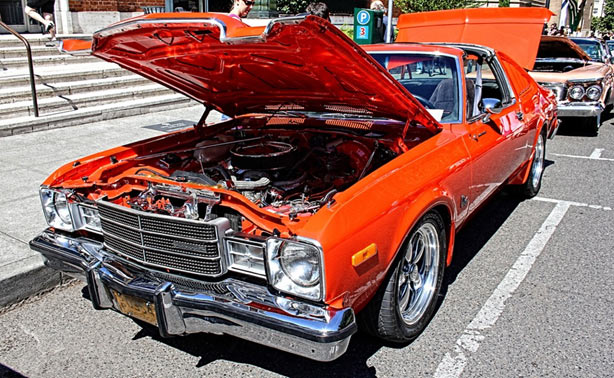
1976–1980 Plymouth Volare Road Runner
Few cars from the 1960s-golden age of muscle cars exceeded the performance reputation of the Road Runner. The Plymouth Road Runner Superbird version, with its free-breathing dual-quad 426 Hemi, became a legend on NASCAR tracks in 1970.
But, in the mid-70s, Plymouth affixed the Road Runner name to the lowly Volare midsize coupe. The standard engine was a feeble 318-cid V-8 with just 160 hp. An optional 175–195 hp. 360 cid V-8 made the Volare Road Runner a bit quicker, but it still was no match for the 1960s and early 1970s cars.
No amount of vinyl stripes, decals, window louvers, T-tops, or spoilers could mask the lack of performance from this “Malaise Era” muscle car. Worse, both the Plymouth Volare and the Dodge Aspen were prone to rust on the underbody, prompting a major recall in 1977.
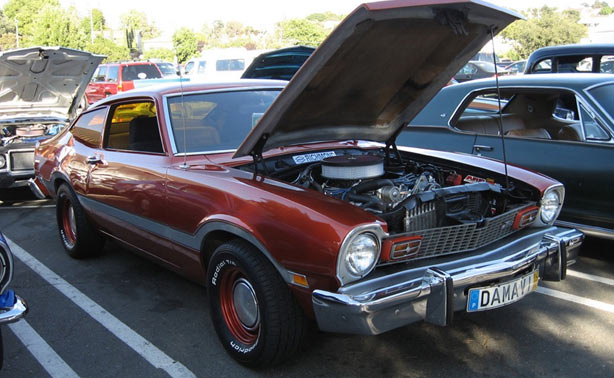
1971 to 1975 Ford Maverick Grabber
The advertised “all-new” for 1970 compact Maverick was not new at all but, essentially, a re-bodied 1960 Ford Falcon. To hide its lack of freshness, Ford launched the Maverick Grabber pseudo-muscle car—a sheep in wolf’s clothing if there ever was one.
While first-year Grabbers only offered frail straight-sixes, the ’71 version used the Mustang’s 5.0-litre V8. However, the power plant only produced 210 horsepower—nothing to get excited about. Engine performance only got worse as the years went on and the smog controls were added. By 1975, the Grabber’s emasculated eight was making a paltry 129 hp.
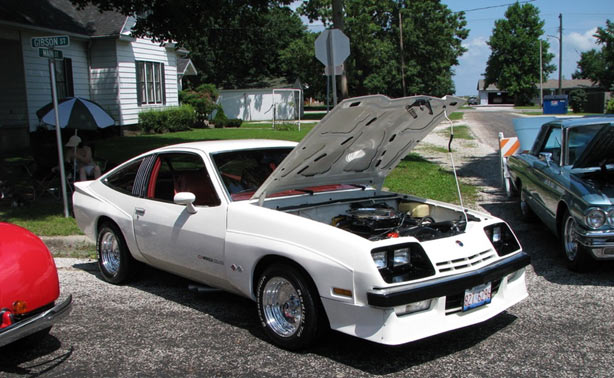
1977 Chevy Monza Mirage
Borrowing its base design from the Chevy Vega, the downscaled Monza coupes of 1975–1980 were designed to be a smaller, sporty, and a less-expensive alternative to the Camaro. In 1977, the Michigan Automotive Techniques Corp offered a package that included wide-body fender flares, spoilers, and striping that turned an ordinary Monza into the Monza Mirage.
The Mirage looked like a race car, imitating the style of the popular IMSA Camel GT racing Monza. However, its performance with a standard four-cylinder was pathetic, and the only V8 available was the 5.0-liter engine that produced only 145 hp.
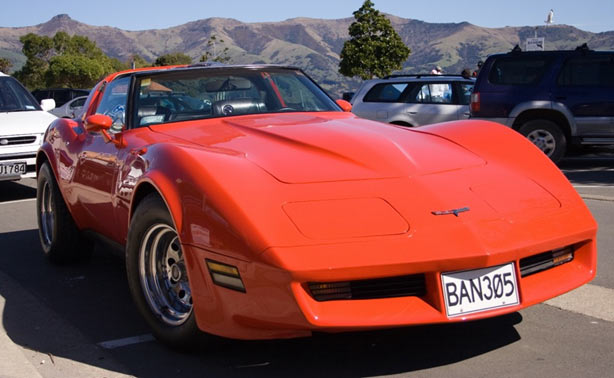
1980 Chevrolet Corvette California 305
The Chevrolet Corvette is considered by many to be the quintessential American muscle car. Much of the admiration for it comes from a special mystique of so much power under the hood of a fiberglass vehicle. However, the 1980 “California” Edition is regarded by many muscle car enthusiasts to be the antithesis—the absolute worst car of its type ever made in America.
A victim of ‘70s Federal emissions requirements and stricter state regulations, the seriously underpowered 1980 California ‘Vette, with a mere 305-cubic-inch engine that generated 180 hp, received few plaudits from the muscle car world when it was released.
Muscle Cars Today
While the ‘70s were a low period for the muscle car, automobile manufacturers were forced to research new materials, develop new technologies, and improve fuel consumption efficiencies. These improvements are evident in the automobiles available today. Most of the muscle cars manufactured today are far superior in performance to the muscle cars of the ‘60s while meeting stricter emissions requirements and achieving much higher fuel economies.






0 comments